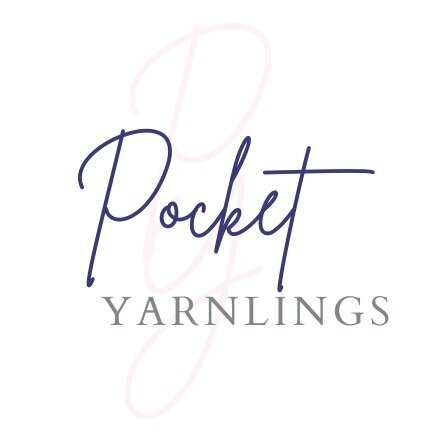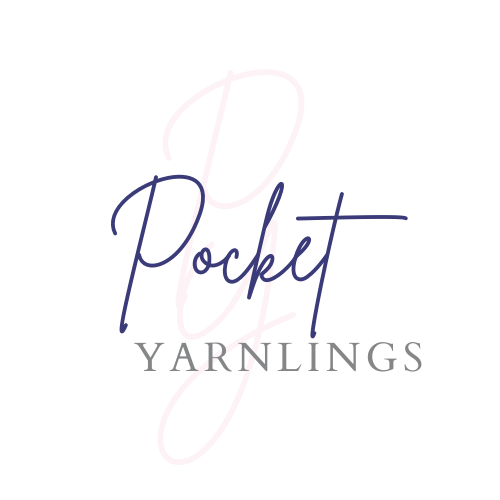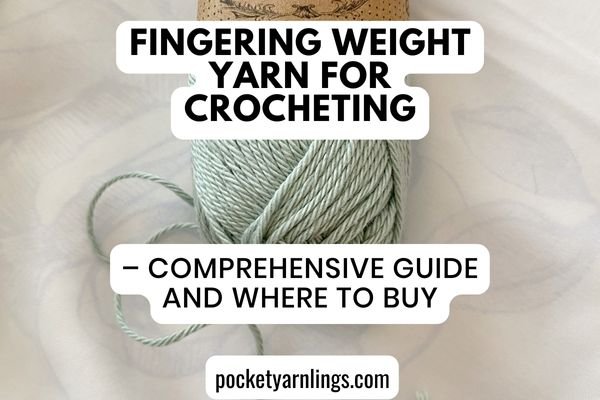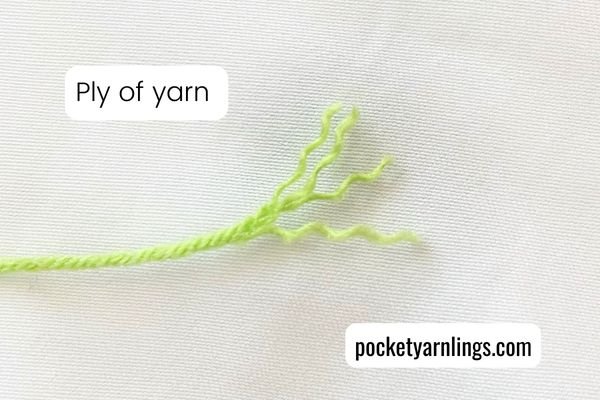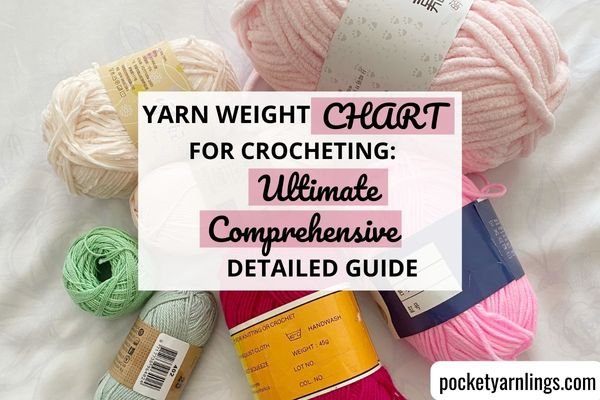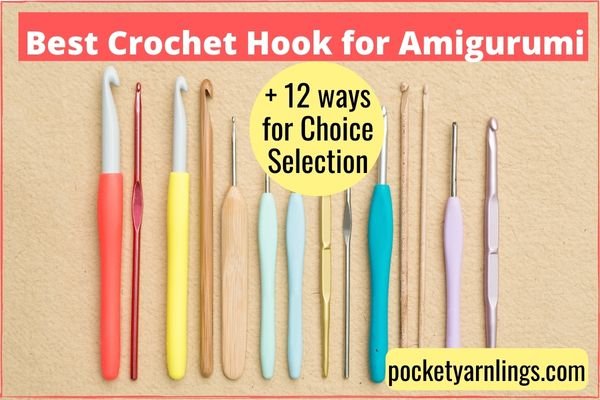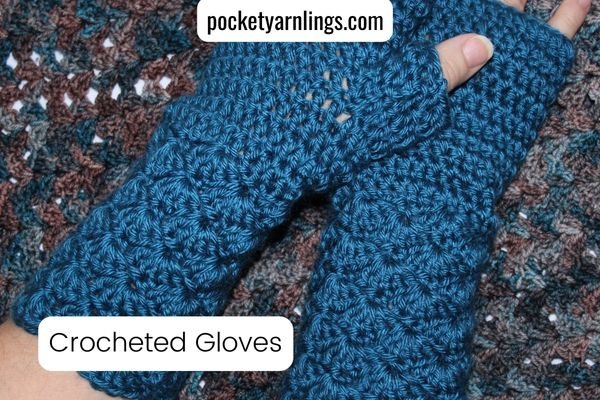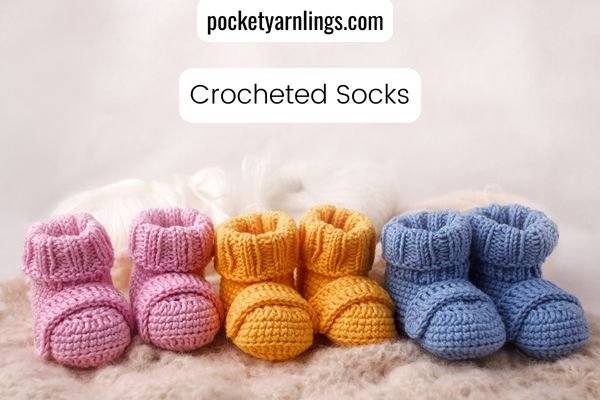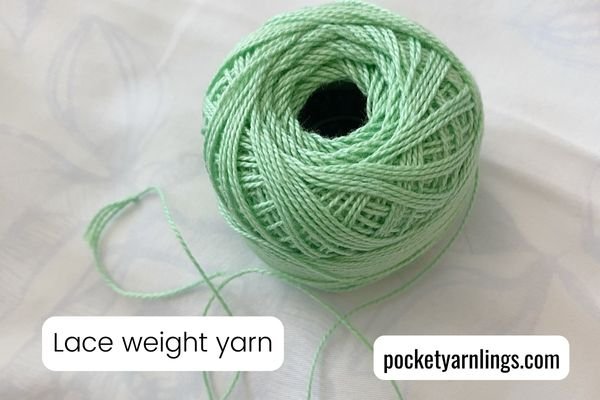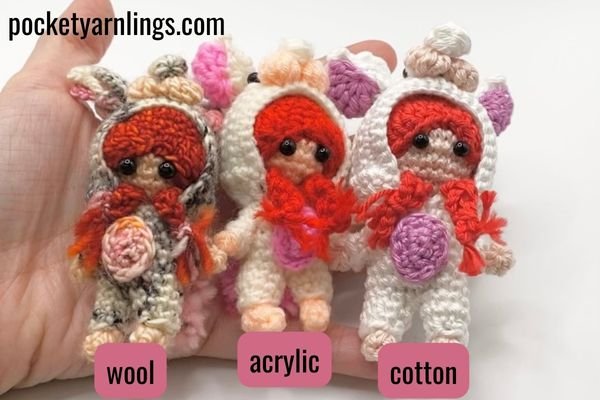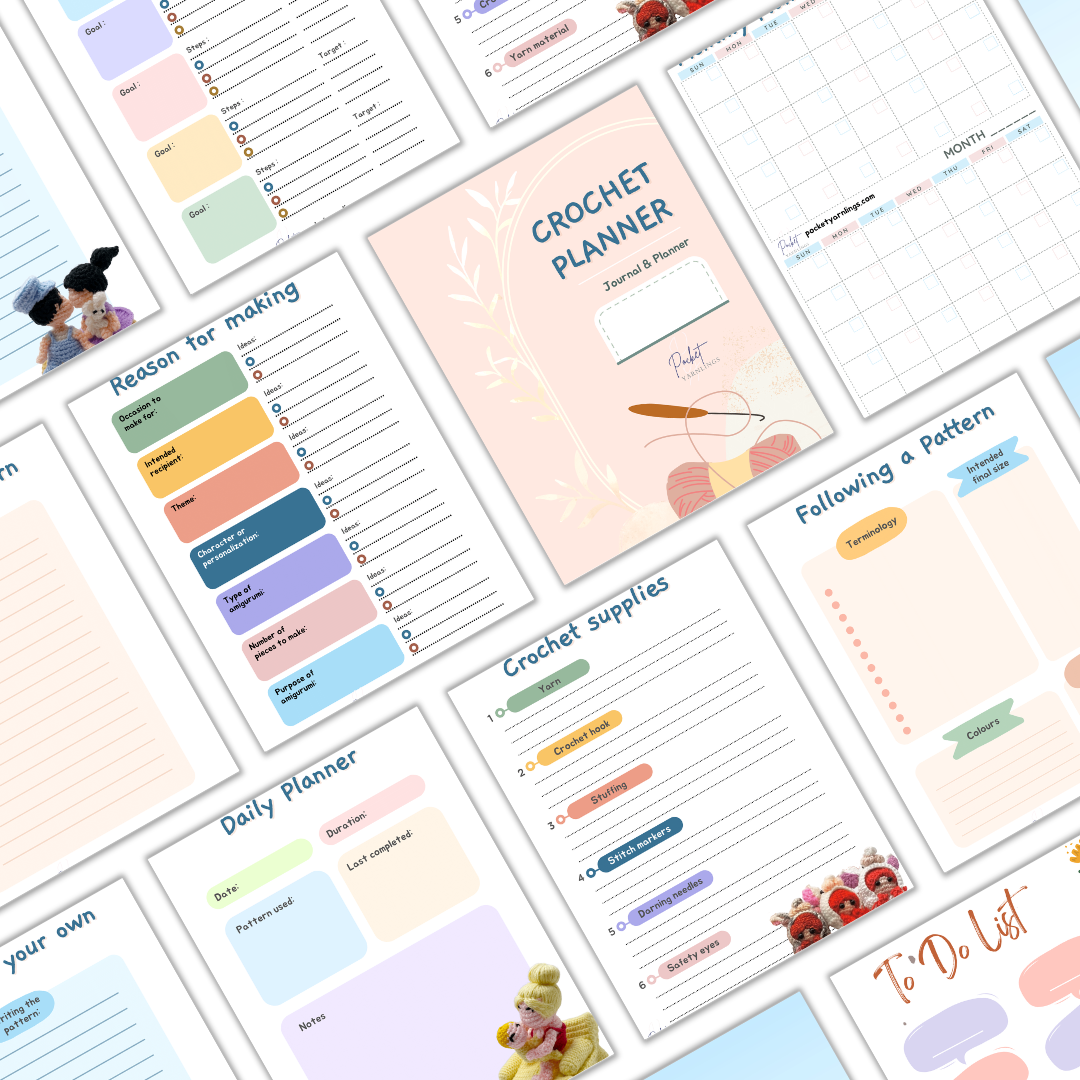Fingering Weight Yarn for Crocheting – Comprehensive Guide and Where to Buy
Fingering weight yarn is a versatile and popular choice for various crochet projects. It is known for its fine and lightweight nature, making it suitable for creating delicate and intricate designs. It is commonly used for making lightweight garments, socks, shawls, lacework, and fine accessories, but it can also be a great option to consider when making small miniature amigurumis – one of my favourite!
Fingering weight yarn is a popular choice for amigurumi crochet because it creates a tight, dense fabric that holds its shape well. But not all fingering yarns are created equal. Some are too thin or too slippery, while others are too thick or too rough.
That's why it's important to choose a high-quality fingering yarn that is specifically designed for amigurumi crochet. In this article, we'll highlight some of the best brands that meet these criteria and provide tips on where to find them. Let’s get started!
*This blog post may contain affiliate links. When you make a purchase through my link, I may receive a small commission at no additional cost to you.*
Table of Contents Show
What is fingering weight yarn?
Fingering weight yarn is a lightweight and fine yarn commonly used for a variety of projects. It is one of the thinner yarn weights available, making it ideal for creating delicate and detailed items.
This weight yarn is versatile and can be used for various projects, including lightweight garments, socks, shawls, lacework, and fine accessories. It is often chosen for intricate stitch patterns and detailed designs.
What weight is fingering yarn?
Fingering weight yarn is thinner than worsted weight or sport weight yarn. It is typically finer than other popular yarn weights, such as DK (double knitting) or aran. On the other hand, it is thicker than lace weight yarn.
What number is fingering weight yarn?
Fingering weight yarn is typically categorized as number 1 on the standard yarn weight classification system. This system assigns numbers to different yarn weights, ranging from 0 (lace weight) to 7 (jumbo/bulky weight). It is in between lace weight (0) and sport weight (2) yarn.
What is another name for super fine yarn?
Yes, fingering weight yarn is the same as superfine weight yarn. The term "fingering weight" is commonly used in North America, while "superfine weight" is a term often used in the UK and Europe. Both terms refer to the same category of yarn that is lightweight and finer in thickness.
While the terms may vary, the weight classification and general characteristics of the yarn remain the same.
What ply is fingering yarn?
Ply refers to the number of individual strands or plies twisted together to create a yarn. The ply of fingering weight yarn can vary depending on the specific yarn and manufacturer. Also, that does not directly correspond to the thickness or weight of the yarn.
Traditionally, fingering weight yarn is often considered to be 4-ply. This means that it is constructed from four individual strands twisted together. However, it's important to note that not all fingering weight yarns are necessarily 4-ply.
Is fingering yarn 4 ply?
In recent years, the ply count of yarns has become more diverse and can range from 2-ply to 8-ply or more. Some fingering weight yarns may be single-ply, while others may have more plies for added strength and structure.
When selecting fingering weight yarn, it's always a good idea to check the specific yarn label or manufacturer's information to determine the ply count. This will give you a better idea of the yarn's characteristics and how it will behave in your projects.
How do you know if yarn is fingering weight?
First and foremost, would be to simply check the yarn label, it should indicate terms like "fingering weight," "sock weight," or "superfine" on the label.
You could also see the recommended gauge on the label and if it matches the range expected for fingering weight yarn, then it is also a good indication of the yarn weight, about 7 to 8 stitches per inch but more on this later below.
Examine the yarn's thickness visually. Fingering weight yarn is usually finer and thinner compared to bulkier yarn weights like worsted or bulky. Check out this article on Yarn Weight Chart for Crocheting.
Another quick way is to consider using wraps per inch (WPI) to determine if it is fingering weight – simply wrap the yarn snugly around a ruler and count the number of wraps in one inch. For fingering yarn, it typically falls within the range of 14 to 16 WPI, but this can vary slightly depending on the specific yarn.
What crochet hook for fingering weight yarn?
When working with fingering weight yarn, you'll typically want to use a smaller crochet hook size to achieve the desired gauge and stitch definition. The exact crochet hook size may vary depending on your personal tension, the specific yarn, and the project you're working on. However, a common range of crochet hook sizes for fingering weight yarn is usually between US B-1 (2.25 mm) and US E-4 (3.5 mm).
What yarn is 2.5 mm?
The size of 2.5 mm is typically associated with a crochet hook rather than a specific yarn weight. Crochet hook sizes are standardized and labelled with numbers or letters to indicate their size. In this case, a 2.5 mm crochet hook is commonly used for working with fine or lightweight yarns, such as lace weight or light fingering weight yarn. This is one of my favourite crochet hook sizes to use. You can get more ideas on ‘Best Crochet Hook for Amigurumi’ below.
What gauge is fingering weight yarn?
The gauge for fingering weight yarn can vary depending on factors such as the specific yarn, the stitch pattern, and the desired fabric. However, a typical gauge range for fingering weight yarn is approximately 21 to 32 stitches per 4 inches (10 cm) when worked with recommended needle or hook size.
Why is it called fingering weight yarn?
The term "fingering weight" yarn originates from historical terminology used in the textile industry. The name "fingering" refers to its traditional use in creating fine knitted or crocheted items, such as delicate gloves or stockings, which were typically worn on the fingers or hands.
While the name "fingering weight" may seem unusual or unrelated to yarn, it has become a standard term within the crafting community to describe this specific category of yarn.
If you found this article useful, remember to pin the image below to Pinterest so that others may see it too!
What is fingering weight yarn the same as?
Fingering weight yarn is sometimes referred to by other names that are used interchangeably, which include “sock weight”, “superfine” and “baby weight”.
While these terms are often used interchangeably with fingering weight yarn, it's important to note that slight variations in thickness and recommended needle or hook sizes may exist between different brands or manufacturers.
What is superfine yarn?
Fingering weight yarn is considered one of the superfine yarn categories. Superfine yarns are the thinnest and lightest yarns available, and fingering weight falls within this classification.
What is sock weight yarn?
As mentioned above, sock weight yarn is also referred to as fingering weight yarn, which is commonly used for crocheting socks, so it is often referred to as "sock weight" yarn. Many patterns designed for fingering weight yarn are specifically labelled as sock patterns.
What is the difference between fine and superfine yarn?
The terms "fine" and "superfine" are used to describe different categories of yarn thickness or weight. Fine yarn generally refers to the category between sport weight and DK weight. It is thinner than medium or worsted weight yarn but is not as delicate as superfine yarn.
Superfine yarn on the other hand, is the finest and thinnest category of yarn and includes lace weight, light fingering and fingering weight. These are often used for intricate lacework, and lightweight garments.
What is the difference between fingering weight yarn and lace weight yarn?
Fingering weight yarn and lace weight yarn are both thin and lightweight yarns, but there are some differences between them. Lace weight is the finest and significantly thinner than fingering weight yarn and likewise requires very fine hooks to achieve stitch definition.
Also, lace weight yarn is primarily used for delicate lace patterns to get lacy shawls or intricate doilies, while fingering weight yarn can be used to make socks, lightweight garments and even baby items.
What is fingering weight yarn held double?
This refers to the technique of using two strands of fingering weight yarn together as if they were a single strand. Instead of using a single strand of fingering weight yarn, you would work with two strands held together throughout your project, and this would create a thicker yarn that is equivalent to a heavier yarn category such as DK or worsted weight.
What is fingering weight yarn best for?
Fingering weight yarn is versatile and can be used for a variety of projects. Some common uses include comfortable and breathable socks, delicate lightweight shawls and garments for warm-weather wear, baby clothes, intricate lacework, and accessories like mittens, gloves and hats.
Fingering weight yarn is not typically the first choice for amigurumi projects. Amigurumi usually requires a thicker yarn to achieve a tight and compact stitch, which helps create the desired shape and structure for stuffed toys. Fingering weight yarn, being thin and lightweight, may not provide the desired results.
However, it can work well for small details or miniature amigurumi projects where a finer texture is desired. It may be suitable for creating intricate facial features or small accessories.
Choosing the Right Fingering Yarn for Your Amigurumi
When it comes to choosing the right yarn for amigurumi crochet, there are a few factors that should be considered.
Fiber Content
One of the most important factors to consider when choosing fingering yarn for amigurumi crochet is the fiber content. The most common fibers used for amigurumi crochet are cotton and acrylic. Cotton is a good choice for amigurumi that will be used as toys, as it is durable and can withstand machine washing. Acrylic, on the other hand, is a good choice for amigurumi that will be used as decorative items, as it is softer and has a wider range of colours available.
Weight
The weight of the yarn is another important factor to consider. Fingering weight yarn is commonly chosen for amigurumi crochet, as it allows for the creation of small, detailed stitches. However, some designers may prefer to use a thicker or thinner yarn depending on the desired finished product.
Colour Selection
The color selection of the yarn is also an important factor to consider. When choosing yarn for amigurumi crochet, it is important to select colors that will complement the design and bring out the details of the finished product. Many yarn brands offer a wide range of colors to choose from, allowing for endless design possibilities. Some even offer pretty colour packs to choose from!
Brand Reputation
Finally, it is important to consider the reputation of the yarn brand when choosing yarn for amigurumi crochet. Some brands may offer higher quality yarns or have a reputation for producing yarns that are easy to work with. Reading reviews and asking for recommendations from other amigurumi crocheters can help ensure that the chosen yarn brand is reputable and produces high-quality yarn.
Free Crochet Planner Journal!
Click here to grab this 20-paged workbook and checklists that will help organize your creativity before you even start on your next crochet project! Or click on image on the left.
Top Fingering Yarn Brands for Amigurumi Crochet
When it comes to creating amigurumi crochet, choosing the right yarn is crucial. Fingering yarn is a popular choice for amigurumi due to its lightweight and soft texture. In this section, we will explore some of the top fingering yarn brands for amigurumi crochet.
Brand 1: Scheepjes Catona
Scheepjes Catona is a popular choice among amigurumi crocheters due to its wide range of colors and soft texture. This 100% mercerized cotton yarn is available in 10-gram balls, making it perfect for small amigurumi projects. It is also machine washable, making it easy to care for.
Brand 2: Knit Picks Stroll
Knit Picks Stroll is a fingering weight yarn that consists of a blend of merino wool and nylon. Using this brand of yarn will typically result in smaller sized amigurumis, while still providing softness, warmth, durability and strength. Also, the colour selection is fantastic, allowing you to explore various shades and create vibrant and eye-catching amigurumi toys!
Brand 3: Katia Amigurumi Yarn
As the name suggests, Katia Amigurumi yarn is specifically designed for making amigurumi projects, making it an excellent choice for your amigurumi creations. It is made from 100% acrylic and its smooth texture allows the stitches to glide over the hook, which is great for creating intricate details in your amigurumi toys.
Also, it comes in a variety of vibrant solid, speckled and variegated colours, which gives you the option to add different detailing to your amigurumi projects. In addition, the skein size is made specifically smaller, for the convenience of making small toys with minimal leftover yarn.
Brand 4: Madeline Tosh Sock Yarn
While Madeline Tosh Sock Yarn is not traditional chosen as an option for amigurumi because of the nature of the fingering weight, it does offer softness and durability when the final project is completed. Also, it provides excellent stitch definition which makes it easier for making amigurumi stitches. However, it might create a more drapey fabric, which might not hold its shape as well as some of the other yarns suggested here.
Where to Find the Best Fingering Yarn Brands
When it comes to finding the best fingering yarn brands for amigurumi crochet, there are plenty of options available. Whether you prefer to shop online or in person, there are many retailers that offer high-quality yarns that are perfect for your next project.
Online Retailers
One of the most convenient ways to shop for fingering yarn is through online retailers. Many online yarn shops offer a wide selection of yarns, including fingering weight options. Some popular online retailers for yarn include:
Knit Picks
Knit Picks offers a variety of fingering weight yarns, including their popular Stroll line. They also offer free shipping on orders over $60.
LoveCrafts
LoveCrafts is another popular online retailer that offers a wide selection of fingering weight yarns. They also offer free shipping on orders over $35.
Brick and Mortar Stores
For those who prefer to shop in person, there are plenty of brick and mortar stores that offer fingering weight yarns. Some popular options include:
Joann
Joann is a popular craft store that offers a variety of yarns, including fingering weight options. They often have sales and coupons available, making it a great option for those on a budget.
Michaels
Michaels is another popular craft store that offers a variety of yarns, including fingering weight options. They also often have sales and coupons available.
Local Yarn Shops
Local yarn shops are a great option for those who want to support small businesses. Many local yarn shops offer a curated selection of high-quality yarns, including fingering weight options.
No matter where you choose to shop, it's important to do your research and choose a reputable retailer that offers high-quality yarns. By taking the time to find the best fingering yarn brands for your amigurumi crochet projects, you can ensure that your finished products are both beautiful and durable.
Free Crochet Planner Journal!
Click here to grab this 20-paged workbook and checklists that will help organize your creativity before you even start on your next crochet project! Or click on image on the left.
Conclusion of Fingering Weight Yarn
In conclusion, fingering weight yarn offers versatility for lightweight and intricate projects. Its fine nature allows for delicate fabrics and detailed stitchwork. It can be a great option to consider when making small miniature amigurumis. Also, choosing the right yarn for amigurumi crochet can make a significant difference in the final product. The brands mentioned in this article are some of the best on the market and are highly recommended by experienced amigurumi crocheters.
Overall, choosing the right yarn brand for amigurumi crochet is a personal preference, and it may take some experimentation to find the perfect match. However, with the information provided in this article, hopefully you can make an informed decision and create beautiful amigurumi projects.
Related Resources
Yarn Weight Chart for Crocheting: Ultimate Comprehensive Detailed Guide
12-point Checklist to Select the Best Yarn for Amigurumi
Crochet Hook Size Chart for Amigurumi: Absolutely Everything You Need to Know
Sport Weight Yarn for Crocheting– Comprehensive Guide and Where to Buy
DK Weight Yarn for Crocheting – Comprehensive Guide and Where to Buy
Worsted Weight Yarn for Crocheting – Comprehensive Guide and Where to Buy
Chunky Weight Yarn for Crocheting – Comprehensive Guide and Where to Buy
Learn to Crochet Online - Beginner Crochet Classes and Advanced Amigurumi Design Courses
